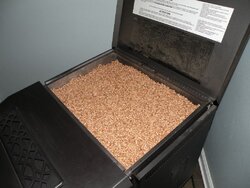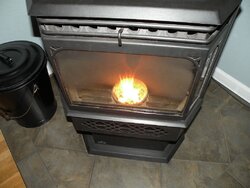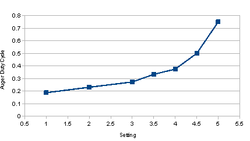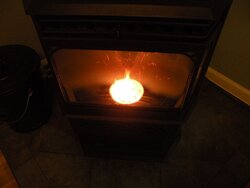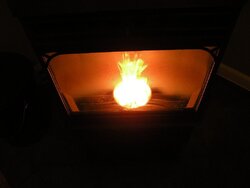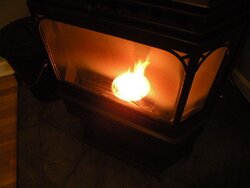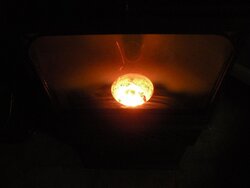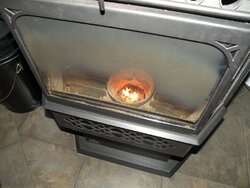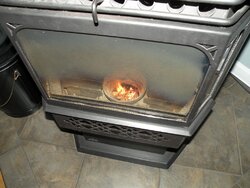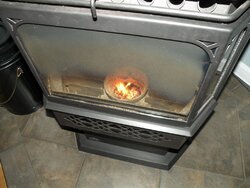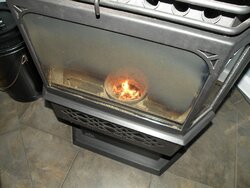Also, this is interesting:
When we start up the stove, we typically start it with the feed rate set on 4. This feed rate puts enough pellets in the pot for the igniter to light them, and we can walk away from the stove during the start up cycle and not worry about the burn pot overflowing and/or backing up into the drop tube, or worry about the stove over firing if we get called away. We leave the convection blower OFF until we feel that the air coming out of the heat exchange tubes is very warm. Once the stove warms up, we turn the convection fan to its mid-range setting of about 2.5. Typically the stove runs along at feed rate 4, convection/room blower fan rate 2.5 with no change in cycle, and no issues, unless we inadvertantly let it run out of pellets or we shut it down. If we aren't standing right beside the stove when it gets hot, we will hear the convection blower override switch trip and the convection blower fan come on at its highest setting. This is a factory installed/engineer designed safety feature that helps keep the stove from over firing. If we aren't standing right there during the start up cycle, and we hear the convection fan kick on, we go back to the stove and set the convection fan dial to 2.5. The convection fan will run on high until the stove is cooled enough to allow the over ride safety feature to drop off. When that happens, the convection fan will drop down to the speed that we've manually set. It typically stays right there, with no intervention from a safety feature or over ride, unless we change something.
We've been running the stove on feed rate 4.5, the top of the recommended range, since 6pm, or almost 4.5 hours. The pellet level in the hopper has dropped by 2". At a feed rate of 4.5, which is supposed to correspond to 4.5 lbs./hour, for 4.5 hours, we should have burned 20.25 pounds, or 37% of the 55 lbs. of pellets in this hopper. I would expect more pellets to be gone, i.e. for this hopper to be at least one third empty by now, really, over one third empty, not merely lowered by 2 inches.
BUT- here's the interesting thing- the override switch on the convection/room blower fan has been activated, and the convection fan has been blowing on HIGH even though it is manually set for 2.5, for a couple of hours now.
The stove is putting out heat. The IR thermometer centered on a center heat exchange tube is registering 300'F.
The flame in the burn pot is bright white, sharp and active. Dropping pellets cause lots of popcorn sparks (no pellets jumping out of the burn pot, but lots of sparks fly.) Damper is set on 2 out of five. The flame has a normal, bright burn and a typical life cycle; it will diminish to bright cinders in the pot, and a few smaller flames, until the auger delivers enough pellets to revive the flame and continue the cycle. There is absolutely no build up in the pot. The ash on the door glass is grayish-white. The stove is burning immaculately right now. The only thing that's causing me some concern is that the override switch has had the convection fan on high for quite a while now to keep the stove from overheating.
The over fired override switch has NOT been triggered. The stove has NOT gotten hot enough to shut itself down.
Tonight we are burning a mixture of Turman's and Presto Logs.
Pictures of pellet level at 10:30pm, plus pictures of flame and flame cycle are attached.
